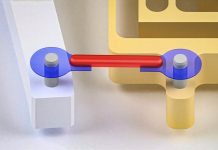
Imagine exploring Mars not with a handful of expensive, heavy rovers, but with swarms of lightweight, wind-driven spheres rolling across the red planet like giant tumbleweeds.
That’s the vision behind the Tumbleweed rover project, a bold idea that could revolutionize how we study Mars at a fraction of today’s cost.
At the Joint Meeting of the Europlanet Science Congress and the Division for Planetary Sciences (EPSC-DPS) 2025, Team Tumbleweed shared exciting results from new experiments that bring this concept closer to reality.
Their tests show that spherical rovers, designed to harness Martian winds, could travel long distances over diverse terrains, collecting valuable scientific data along the way.
Tumbleweed rovers are about five meters in diameter, shaped like giant balls, and built to let the wind do most of the work.
Unlike traditional rovers that rely on wheels and motors, these robotic spheres could drift and roll across the Martian surface in large numbers, spreading out to cover wide areas. Each rover would carry scientific instruments to measure atmospheric conditions, soil chemistry, magnetic fields, and other environmental data.
Once their traveling phase ends, the rovers would collapse into stationary units, continuing to operate as long-term weather stations. The result would be a scattered network of sensors across Mars, offering scientists a new way to monitor the planet at multiple locations simultaneously.
The project’s latest breakthroughs come from two major testing campaigns. In July 2025, Team Tumbleweed carried out a week-long series of experiments at Aarhus University in Denmark, home to one of the world’s leading facilities for simulating planetary environments.
Using scaled-down prototypes, ranging from 30 to 50 centimeters in diameter, the team tested how the rovers behaved in a wind tunnel under Martian-like conditions: low air pressure and different surface textures, from smooth sand to boulder-strewn fields.
The results were promising. Winds of about 9–10 meters per second—roughly the speed of a brisk Earthly breeze—were enough to set the prototypes rolling.
The rovers successfully climbed slopes equivalent to steep Martian hills, and onboard sensors continued working while tumbling. Even more encouraging, the rovers’ real-world behavior closely matched computer simulations, confirming that the physics models guiding their design are accurate.
Because the prototypes were deliberately built heavier than actual rovers would be, the required wind speeds in real Martian conditions might be even lower.
Team Tumbleweed also highlighted data from NASA’s Insight lander and Ingenuity helicopter, which suggest that near-surface winds on Mars are more variable and stronger than once thought, particularly during the Martian summer.
These winds appear to reach speeds that would be strong enough to propel the Tumbleweed rovers across vast distances. Based on modeling, an average rover could cover over 400 kilometers in just 100 Martian days, with the potential to travel as much as 2,800 kilometers under favorable conditions.
Earlier in 2025, the team also tested a larger, 2.7-meter prototype called the Tumbleweed Science Testbed in a quarry in the Netherlands. Equipped with standard sensors—such as a camera, magnetometer, and GPS—the rover successfully gathered environmental data while rolling over natural terrain.
This marked the first real-world demonstration that a Tumbleweed rover could collect and process scientific information on the move.
Team Tumbleweed is an international, interdisciplinary group of young scientists and engineers, based primarily in Vienna, Austria, and Delft, the Netherlands.
With members from more than 20 countries, the team has become a hub of innovation and entrepreneurial spirit.
Their next steps include equipping the rovers with more advanced instruments, like radiation detectors, soil probes, and dust sensors, as well as testing how multiple rovers can work together in coordinated “swarms.”
The next big trial is set for November in Chile’s Atacama Desert, one of the driest and most Mars-like landscapes on Earth.
There, at least two rovers will carry instruments from partner organizations and undergo field tests to refine their performance and coordination strategies.
If successful, the Tumbleweed rover project could mark a turning point in planetary exploration. Instead of relying on one or two costly rovers to crawl across limited terrain, swarms of wind-driven explorers could give scientists a broader, more dynamic view of Mars.
By turning the planet’s unpredictable winds into a source of mobility, the Tumbleweed team hopes to unlock new possibilities for low-cost, large-scale exploration—and bring us closer to answering key questions about the Martian environment.



